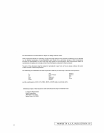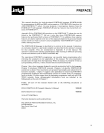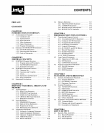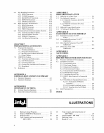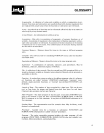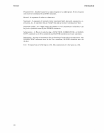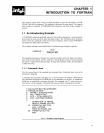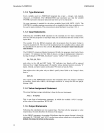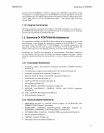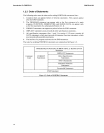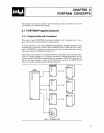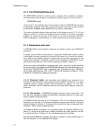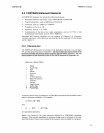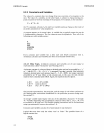
GLOSSARY
Argument(s) - A collection
of
values
and
variables
on
which a
computation
is
per-
formed.
Functions
and
subroutines
are
usually
defined
with
dummy
arguments
that
are
replaced
with actual values
when
the
functions
or
subroutines
are
referenced.
Array
-
An
ordered
set
of
data
that
can
be
referenced
collectively (by
array
name)
or
selectively (by
array
element
name).
Array
Element -
An
individual
item within
an
array.
Association -
May
refer
to
association
of
arguments,
of
memory
locations,
or
of
symbols.
Association
of
arguments
is
the
replacement
of
dummy
arguments
with ac-
tuals
when
a
procedure
is
referenced.
Association
of
memory
locations
is
the
sharing
of
memory
by
two
or
more
items.
The
symbol
names
of
the
items
sharing
memory
are
also said
to
be
associated.
Common
Memory
-
Memory
shared
by items in
the
same
or
different
program
units.
Compiler -
The
software
tool
for
translating
FORTRAN
source
code
into
machine-
executable
form.
Equivalenced
Memory
-
Memory
shared
by items in
the
same
program
units.
Expression - A
combination
of
operands,
operators,
and
parentheses.
May
be
arithmetic,
character,
relational,
logical,
or
Boolean.
File - A collection
of
data
records.
May
be
external
(any
ISIS-recognized file)
or
in-
ternal
(a
character
variable
or
character
array
element).
Records
can
be accessed se-
quentially
or
directly.
Function - A
routine
that
returns
a value
to
the
calling
statement
when
it
is
referenc-
ed.
Functions
are
called
'intrinsic'
(FORTRAN
predefined),
'statement'
(user-
defined,
single-statement
function),
or
'external'
(user-defined
FUNCTION
sub-
program).
Length
of
Data -
The
number
of
bytes
occupied
by a
data
item.
This
can
be
one,
two,
or
four
bytes
for
integer
and
logical items
and
four
bytes
for
real items.
Character
data
occupies
one
byte
per
character.
Main Program -
The
main
program
is
the
first
part
of
an
entire
FORTRAN
pro-
gram
to
be
invoked.
It
may
not
have
a
FUNCTION,
SUBROUTINE,
or
BLOCK
DATA
statement
as its first
statement.
It
may
have
a
PROGRAM
statement
as its
first
statement.
Number
Base -
The
representation
used
for
numeric
data.
May
be
binary,
octal,
decimal,
or
hexadecimal.
Procedure -
Another
term
for
a
function
or
subroutine.
FUNCTION
and
SUBROUTINE
subprograms
are
called
'external'
procedures.
Program -
The
entire
executable
program
includes
the
main
program,
all sub-
programs
(FUNCTION,
SUBROUTINE,
BLOCK
DATA)
plus
any
compiler
con-
trollines,
library
procedures,
and
included
files.
vii




